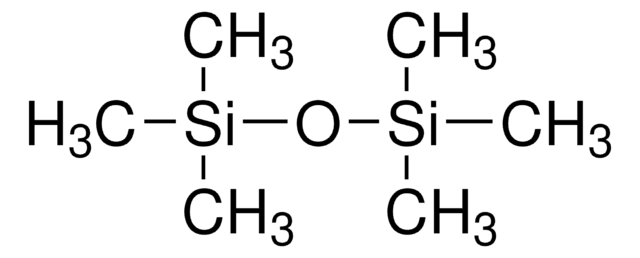87920
Tetramethylsilane
analytical standard, for NMR spectroscopy, ACS reagent
About This Item
Prodotti consigliati
Grado
ACS reagent
analytical standard
for NMR spectroscopy
Livello qualitativo
Tensione di vapore
11.66 psi ( 20 °C)
Saggio
≥99.5% (GC)
Forma fisica
liquid
Temp. autoaccensione
842 °F
Indice di rifrazione
n20/D 1.358 (lit.)
n20/D 1.359
P. eboll.
26-28 °C (lit.)
Punto di fusione
−99 °C (lit.)
Densità
0.648 g/mL at 25 °C (lit.)
applicazioni
environmental
Formato
neat
Temperatura di conservazione
2-8°C
Stringa SMILE
C[Si](C)(C)C
InChI
1S/C4H12Si/c1-5(2,3)4/h1-4H3
CZDYPVPMEAXLPK-UHFFFAOYSA-N
Cerchi prodotti simili? Visita Guida al confronto tra prodotti
Descrizione generale
Applicazioni
Avvertenze
Danger
Indicazioni di pericolo
Consigli di prudenza
Classi di pericolo
Flam. Liq. 1
Codice della classe di stoccaggio
3 - Flammable liquids
Classe di pericolosità dell'acqua (WGK)
WGK 3
Punto d’infiammabilità (°F)
-16.6 °F - closed cup
Punto d’infiammabilità (°C)
-27 °C - closed cup
Dispositivi di protezione individuale
Eyeshields, Faceshields, Gloves
Scegli una delle versioni più recenti:
Possiedi già questo prodotto?
I documenti relativi ai prodotti acquistati recentemente sono disponibili nell’Archivio dei documenti.
I clienti hanno visto anche
Il team dei nostri ricercatori vanta grande esperienza in tutte le aree della ricerca quali Life Science, scienza dei materiali, sintesi chimica, cromatografia, discipline analitiche, ecc..
Contatta l'Assistenza Tecnica.










